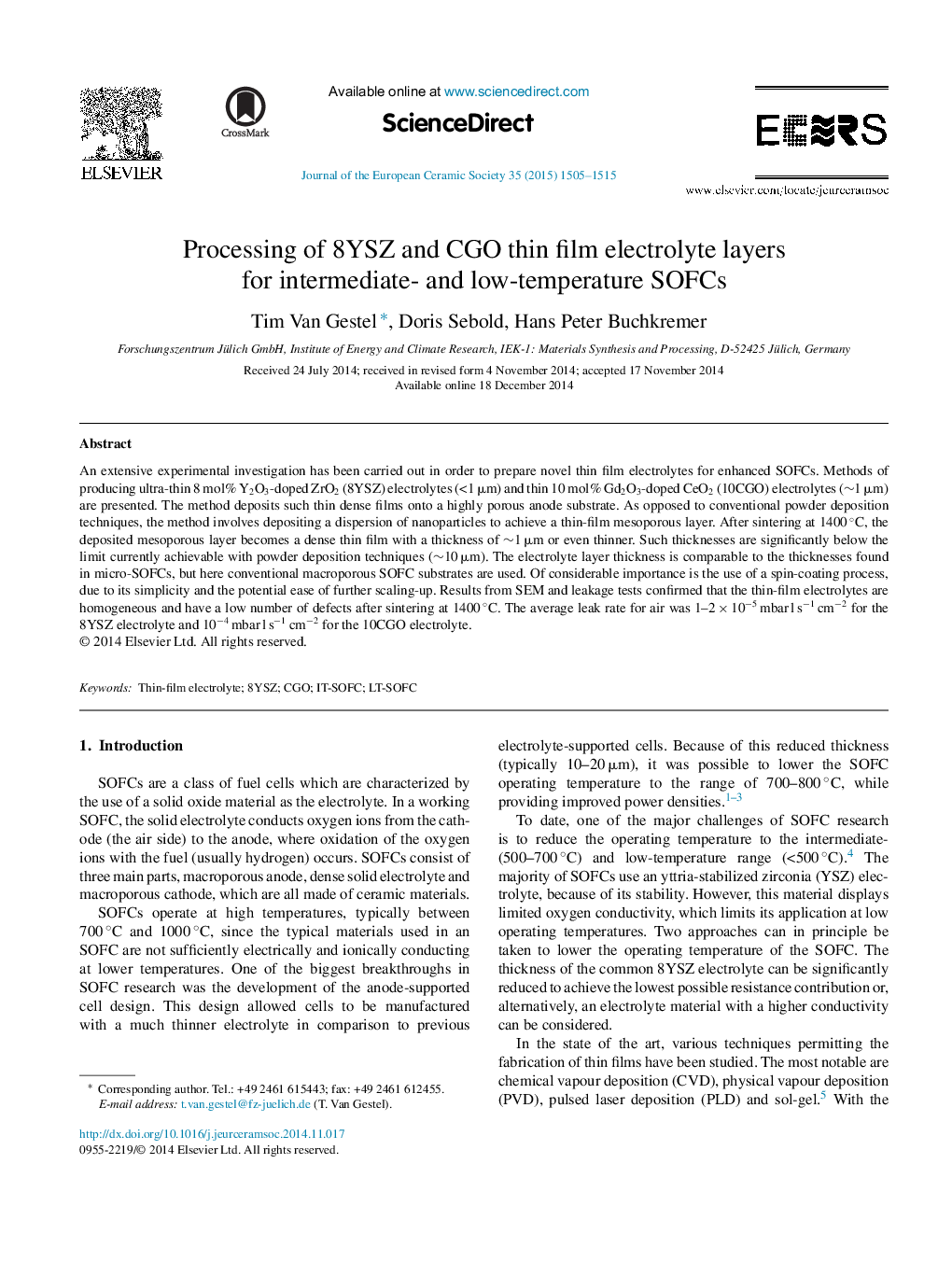| Article ID | Journal | Published Year | Pages | File Type |
|---|---|---|---|---|
| 1473909 | Journal of the European Ceramic Society | 2015 | 11 Pages |
An extensive experimental investigation has been carried out in order to prepare novel thin film electrolytes for enhanced SOFCs. Methods of producing ultra-thin 8 mol% Y2O3-doped ZrO2 (8YSZ) electrolytes (<1 μm) and thin 10 mol% Gd2O3-doped CeO2 (10CGO) electrolytes (∼1 μm) are presented. The method deposits such thin dense films onto a highly porous anode substrate. As opposed to conventional powder deposition techniques, the method involves depositing a dispersion of nanoparticles to achieve a thin-film mesoporous layer. After sintering at 1400 °C, the deposited mesoporous layer becomes a dense thin film with a thickness of ∼1 μm or even thinner. Such thicknesses are significantly below the limit currently achievable with powder deposition techniques (∼10 μm). The electrolyte layer thickness is comparable to the thicknesses found in micro-SOFCs, but here conventional macroporous SOFC substrates are used. Of considerable importance is the use of a spin-coating process, due to its simplicity and the potential ease of further scaling-up. Results from SEM and leakage tests confirmed that the thin-film electrolytes are homogeneous and have a low number of defects after sintering at 1400 °C. The average leak rate for air was 1–2 × 10−5 mbar l s−1 cm−2 for the 8YSZ electrolyte and 10−4 mbar l s−1 cm−2 for the 10CGO electrolyte.
